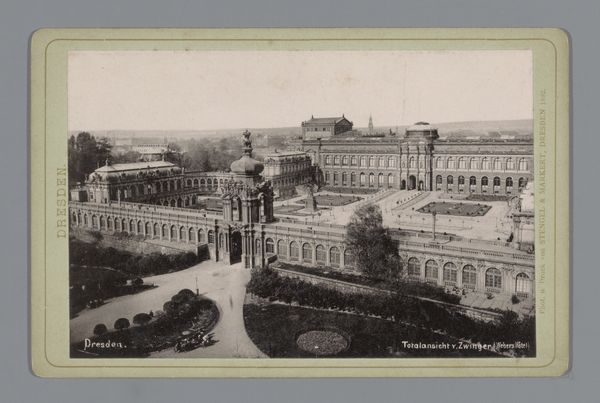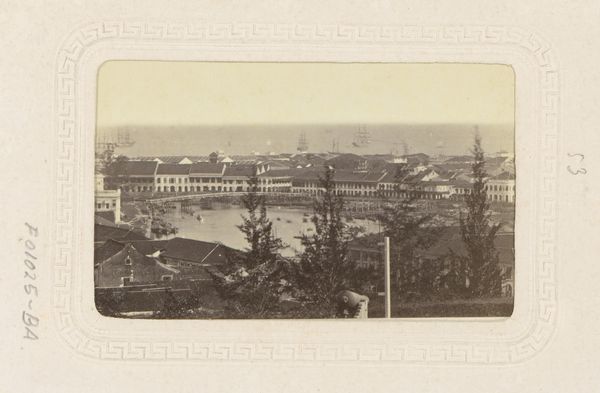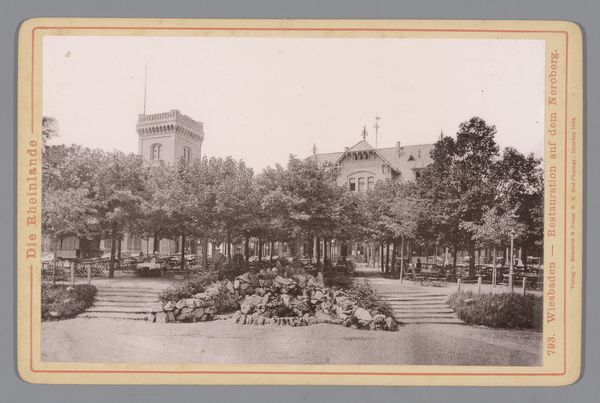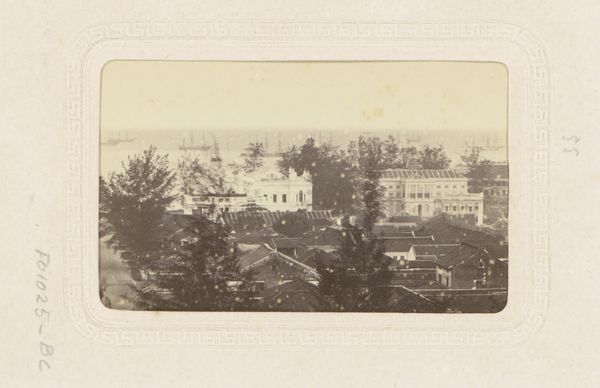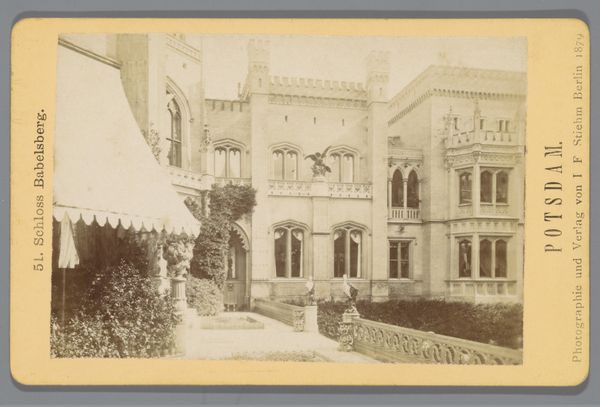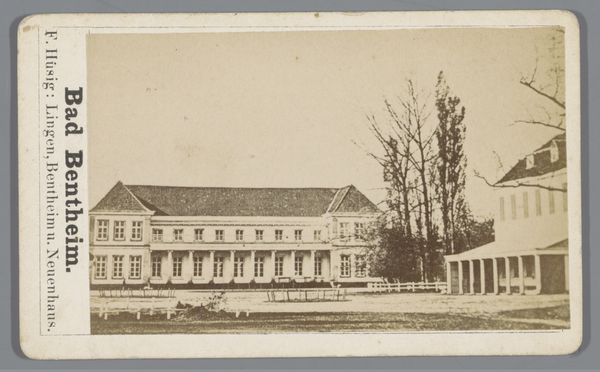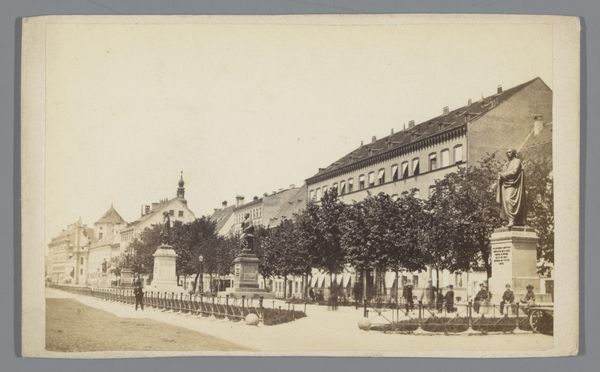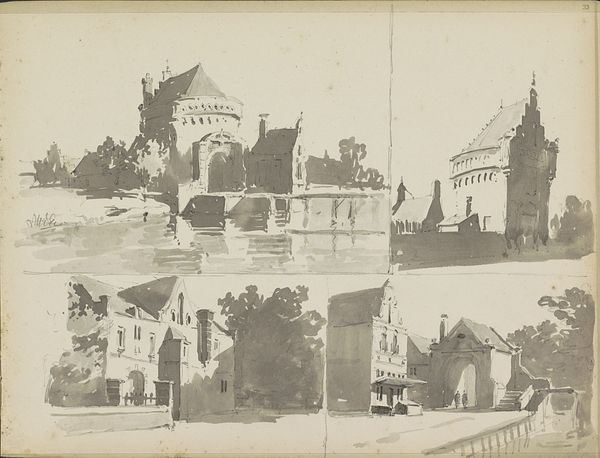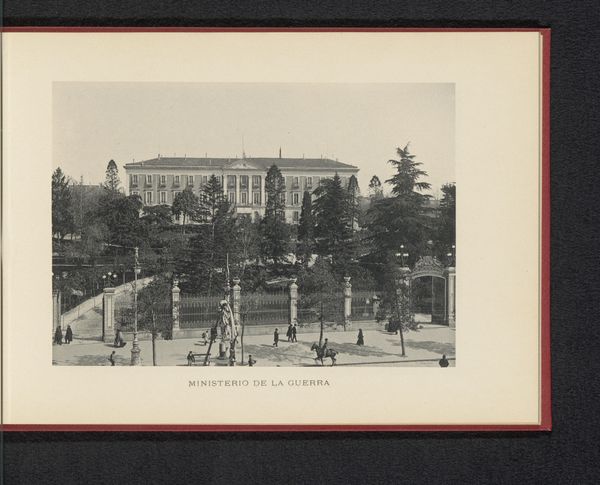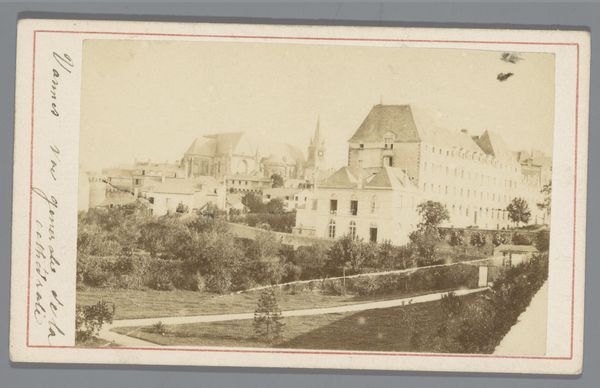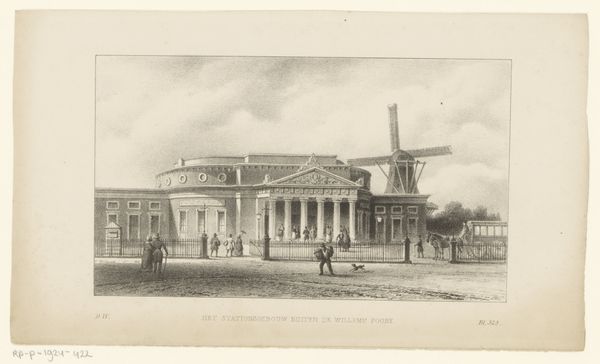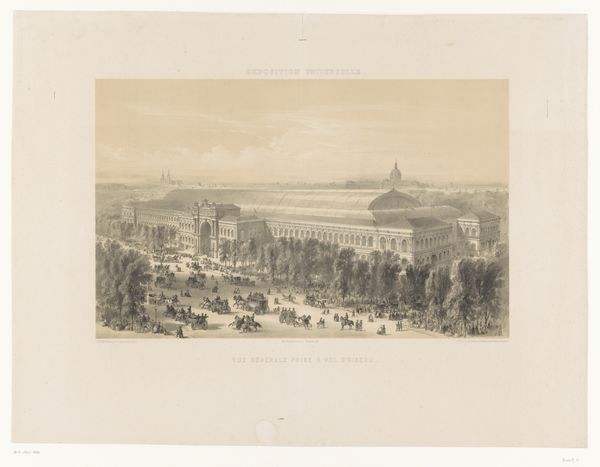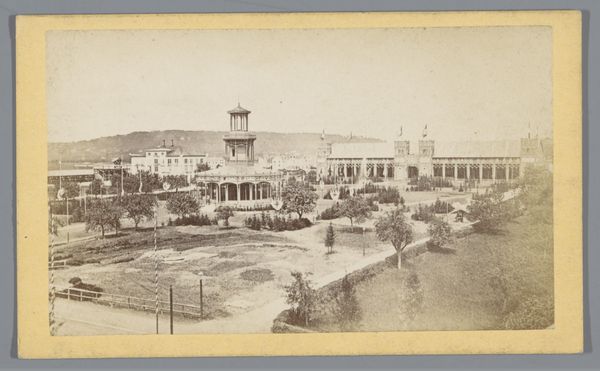
Dimensions: height 67 mm, width 110 mm
Copyright: Rijks Museum: Open Domain
Editor: Here we have an intriguing photo reproduction of a print, "Fotoreproductie van een prent van de Elisenbrunnen te Aken", made sometime between 1860 and 1885 by Jm. v. Ph. Frey. The print captures a cityscape with prominent architecture. The buildings exude an elegant neoclassical vibe that creates a certain formal atmosphere. What visual elements strike you most when you examine this image? Curator: Formally, the image's strength resides in its careful layering and the stark contrast achieved within a limited grayscale palette. The photographer, rather brilliantly, exploits the receding planes of the architecture and cityscape to create depth. Note the precise arrangement of the columns and the subtle variations in shadow—these elements structure our reading of the urban space. It isn't merely a documentary record; it is a composition, built from light, shadow and orthogonal geometries. Editor: I see how the sharp contrast adds to the structural feeling. Is there something you find particularly unique about the construction of this print? Curator: The interesting tension arises from its status as a reproduction. The texture of the print, already a mediated representation, is further distanced by the photographic process. The formal outcome of this double mediation is a fascinating flattening of the image, a de-emphasis of texture. Consider how this contributes to the overall sense of ordered precision and perhaps a distancing from lived experience. Editor: That’s a really insightful observation! I hadn’t considered the layering of reproduction like that. Curator: Precisely. So, how might we summarise the aesthetic impact given its composition and its technological status? Editor: It strikes me as an interesting interplay of classical order and photographic realism. It’s taught me that a second-hand image can have its own complex visual argument.
Comments
No comments
Be the first to comment and join the conversation on the ultimate creative platform.
